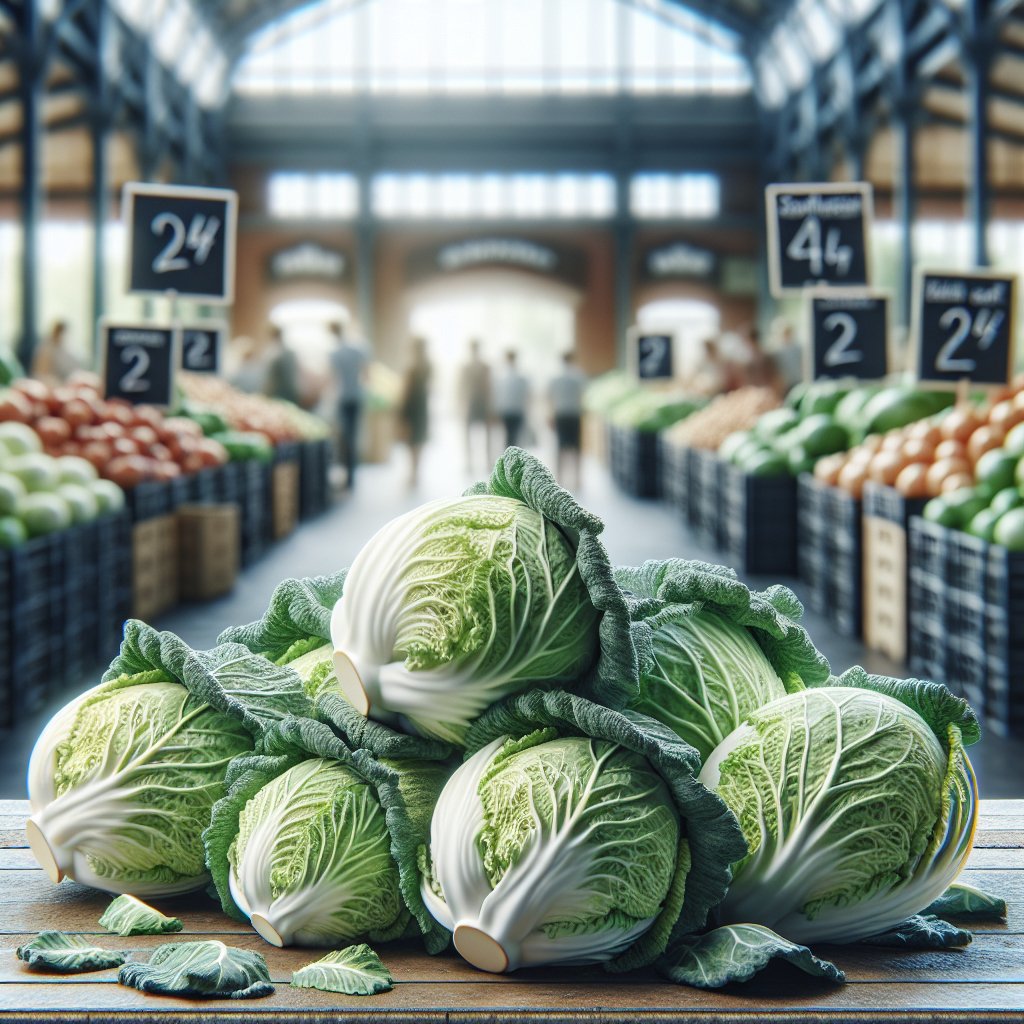The cabbage market is a dynamic sector that experiences significant seasonal price fluctuations. Understanding these changes is crucial for farmers, distributors, and consumers alike. This article delves into the factors influencing cabbage prices, the seasonal trends observed in the market, and strategies for stakeholders to navigate these fluctuations effectively.
Factors Influencing Cabbage Prices
Several factors contribute to the pricing of cabbage, ranging from environmental conditions to market demand. Recognizing these elements can help stakeholders make informed decisions.
1. Weather Conditions
Weather plays a pivotal role in agricultural production, and cabbage is no exception. The growth cycle of cabbage is sensitive to temperature, rainfall, and sunlight. Extreme weather events, such as droughts or heavy rains, can adversely affect crop yields, leading to price increases. For instance, a late frost can damage young plants, resulting in reduced supply and higher prices in the market.
2. Seasonal Production Cycles
Cabbage is typically grown in two main seasons: spring and fall. Each season brings its own set of challenges and opportunities. In the spring, early varieties are planted, and as the season progresses, the supply increases, often leading to lower prices. Conversely, in the fall, as the harvest season concludes, supply diminishes, and prices tend to rise. Understanding these cycles is essential for farmers to plan their planting schedules and for distributors to manage inventory effectively.
3. Market Demand
Consumer preferences and demand significantly impact cabbage prices. During certain times of the year, such as holidays or festivals, the demand for cabbage may spike, leading to price increases. Additionally, trends in health and nutrition can influence consumer behavior. As more people adopt plant-based diets, the demand for vegetables, including cabbage, may rise, further affecting market prices.
4. Transportation and Logistics
The cost of transporting cabbage from farms to markets also affects pricing. Fluctuations in fuel prices, changes in transportation regulations, and logistical challenges can lead to increased costs, which are often passed on to consumers. Efficient supply chain management is crucial for minimizing these costs and stabilizing prices.
5. Global Market Trends
Global trade dynamics can also influence local cabbage prices. Import and export regulations, tariffs, and international demand can create price volatility. For example, if a major cabbage-producing country faces a crop failure, it may lead to increased imports from other regions, affecting local prices. Farmers and distributors must stay informed about global market trends to anticipate potential price changes.
Seasonal Price Trends in the Cabbage Market
Analyzing historical price data reveals distinct seasonal trends in the cabbage market. Understanding these patterns can help stakeholders make strategic decisions regarding planting, harvesting, and selling.
1. Spring Season Trends
During the spring season, cabbage prices typically start lower as farmers begin harvesting early varieties. The influx of fresh produce leads to increased supply, which often results in lower prices. However, as the season progresses and supply stabilizes, prices may begin to rise slightly due to increased demand from consumers eager for fresh vegetables after winter.
2. Summer Demand Surge
As summer approaches, demand for cabbage often increases due to barbecues, picnics, and other outdoor gatherings. This seasonal demand can lead to price spikes, especially if the supply is not sufficient to meet consumer needs. Farmers may capitalize on this trend by timing their harvests to coincide with peak demand periods.
3. Fall Harvest and Price Increases
The fall season marks the end of the cabbage harvest, leading to a decrease in supply. As the availability of fresh cabbage diminishes, prices typically rise. This trend is particularly pronounced as consumers prepare for winter and seek to stock up on vegetables. Farmers must be strategic in their marketing efforts during this time to maximize profits.
4. Winter Market Dynamics
During the winter months, cabbage prices may stabilize or even decline slightly as storage techniques allow for the preservation of harvested crops. However, the overall demand for cabbage may decrease as consumers turn to other vegetables. Understanding these winter dynamics is essential for distributors and retailers to manage their inventory effectively.
5. Price Forecasting and Strategic Planning
To navigate the seasonal price fluctuations in the cabbage market, stakeholders can employ various strategies. Price forecasting models that take into account historical data, weather patterns, and market trends can help farmers and distributors make informed decisions. Additionally, diversifying crop production and exploring alternative markets can mitigate risks associated with price volatility.
Conclusion
The cabbage market is influenced by a myriad of factors, including weather conditions, seasonal production cycles, market demand, transportation costs, and global trends. By understanding these elements and recognizing seasonal price trends, stakeholders can make informed decisions that enhance their profitability and sustainability. As the agricultural landscape continues to evolve, staying attuned to market dynamics will be essential for success in the cabbage industry.




